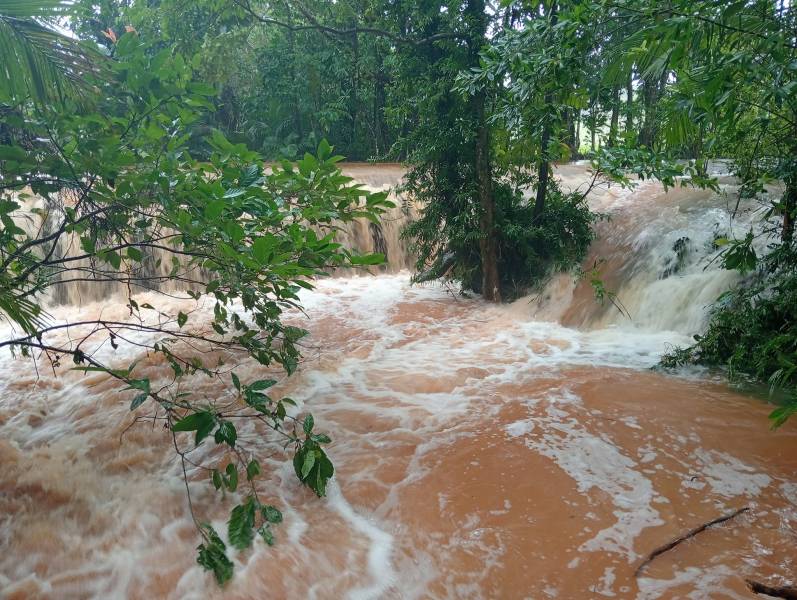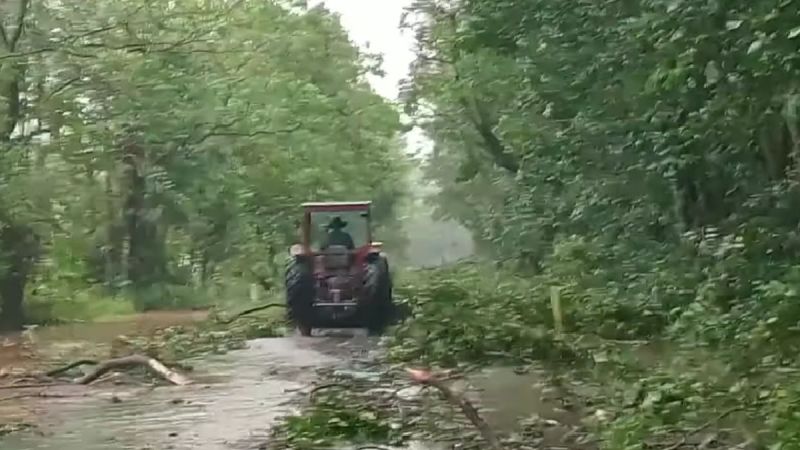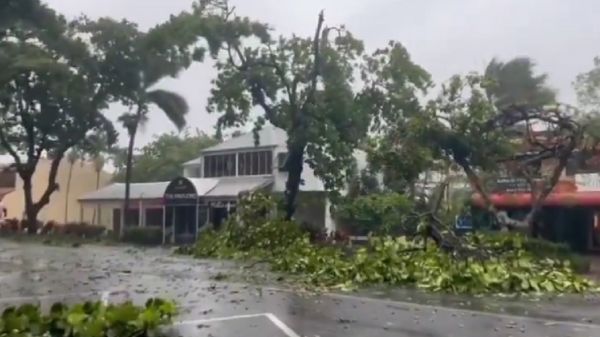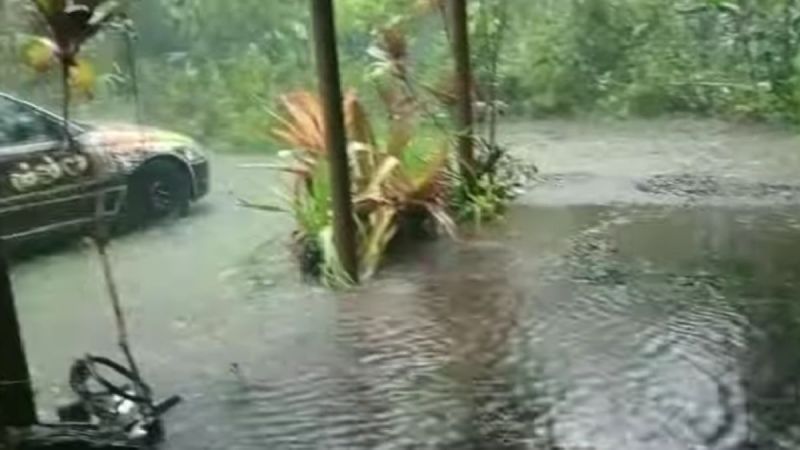‘More punch than expected’: First pictures from Jasper hit-zone

The first pictures are emerging from the impact zone where Cyclone Jasper crossed the far north Queensland coast as a category two system overnight Wednesday.
The tiny community of Cow Bay, near Cape Tribulation, has already started the “massive” clean-up after being whacked with destructive winds and a torrential downpour.
Locals have posted photos of roads under water, creeks turned into rivers and huge trees in the Daintree Rainforest snapped at their trunks.
Cow Bay, in the Daintree Rainforest, is about 50km south of Wujal Wujal where the eye of the storm hit about 9pm Wednesday.
Craig Watson kept his Facebook feed active with continual updates as Jasper pounded his rainforest property, “packing more punch than expected”.
“Made it through the night OK. This morning the relentless rain is going to flood every single creek, river, causeway, uproot more trees, and cause landslides on the main road in and out from Daintree Ferry to beyond Cape Tribulation,” he posted on Thursday.
“This will be a massive clean-up. Massive.”
While Cairns and other populated towns breathed a sigh of relief at having escaped severe damage, little word had trickled out yet from tiny communities cut off north of the Daintree River where the worst cyclone impact was felt.
People in Jasper’s destructive path have been warned they are still not safe despite the system weakening, as half a metre of rain pelted down.
There is a major flood warning for the croc-infested Daintree River which divides Cape Tribulation’s communities from the mainland, and is crossed by barge.

Gullies have turned into rivers in Cow Bay after half a metre of water pelted down. Photo: Facebook (Craig Watson)
The season’s first cyclone hit the coast as a category 2 storm near Wujal Wujal, north of Cairns, bringing damaging winds of 115km/h and heavy rainfall.
It has weakened as it heads inland but intense showers, thunderstorms and strong wind gusts are set to continue.
People were forced to flee their homes as trees were uprooted and power lines damaged with more than 200mm of rain causing flooding.
More than 43,000 homes and businesses are without power.

A local begins clearing the roads north of the Daintree River. Photo: Facebook (Craig Watson)
“This event is not over,” Queensland Treasurer Cameron Dick said on Thursday.
Fallen powerlines and rising floodwaters are set to further test locals in coming days after the system was downgraded to a tropical low overnight.
“That means a quarter of homes and businesses in the affected areas have no power this morning,” Dick said.

The main street of Port Douglas, a popular tourist town north of Cairns. Photo: Georgina Hill
A dozen people and a dog had to be rescued at Mossman early on Thursday, more than 100km from where the system made landfall.
Another 40 people in surrounding areas left their homes and stayed with friends as floodwaters rose.
More than 100 people are at evacuation centres with the Queensland Fire and Emergency Services receiving more than 50 calls for assistance.
The Captain Cook Highway between Cairns and Port Douglas has been closed.
The cyclone may have passed but people have been encouraged not to head outdoors with police urging locals to give emergency services another 12 hours to “do their job and make it safe”.
Flooding is a major concern after 20 locations across the far north received more than 200mm of rain in past 24 hours.
Heavy showers are set to continue into Thursday evening.

Craig Watson watched water rising around his Cow Bay property. Photo: Facebook
Significant river rises have occurred at the Mossman and Bloomfield rivers, reaching levels of 8.36m and 6.8m respectively.
Flood warnings have been issued for a number of north tropical coastal catchments.
A severe weather warning is current for the north tropical coast and tablelands with falls of between 150mm and 200mm still possible on Thursday.
The Aboriginal community of Wujal Wujal and surrounding areas copped the brunt of the cyclone while 25,000 homes and business in Cairns are without power.
Energy Minister Mick de Brenni said outages had been caused by falling trees and branches.
“Thankfully though, we haven’t seen any impact to the high voltage transmission system,” he said.
Cairns residents are expected to conserve drinking water for the rest of the week as authorities work to remove debris from a treatment plant.
Coles said additional deliveries were on their way to far north Queensland stores.
“We already had extra supply of essentials for the community, including water, fresh produce and cleaning items,” a spokesperson said.
There is a chance the storm could intensify again in the Gulf of Carpentaria on the weekend or off the Top End coast early next week, the Bureau of Meteorology said.
-with AAP








